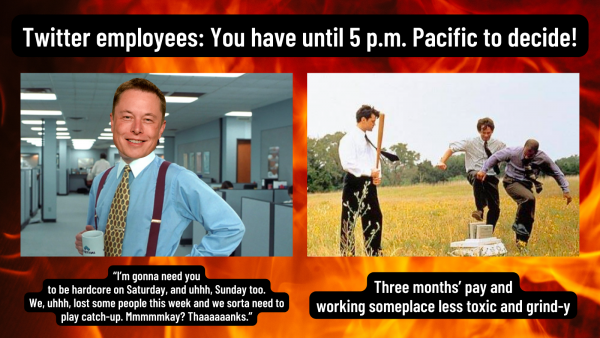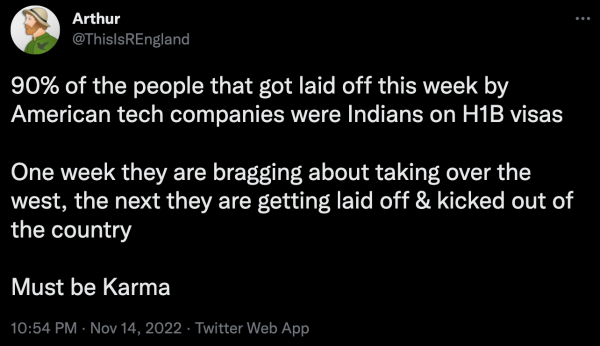
A lot of tech workers — and according to some estimates, 25% of Twitter’s workforce — are people from other countries working on an H-1B visa. This temporary non-immigrant visa lets employers hire non-U.S.-citizen/non-U.S.-resident-alien professionals to work in “specialty occupations” that require at least a bachelor’s degree or the equivalent.
(My parents, both doctors, worked in the U.S. and thus had H-1B visas. I was already around when this took place, hence my “American” accent.)
The choice that Twitter employees had to make yesterday — quit or work at “Twitter 2.0” under a “hardcore”, random, capricious, ill-thought-out, workaholic leadership — wasn’t much of a choice for the ones on an H-1B visa. H-1Bs are tied to a specific employer, and quitting that employer means that you have 60 days to find a new employer to sponsor a new H-1B tied to the new employer, change your status, or leave the U.S..
For examples, see:
- My clock to leave USA has started: Indian man on H1B visa after Meta fired him
- Amazon fires 10,000 employees: Indian software engineers, H1B visa holders impacted badly
- Twitter job cuts become double whammy for H1B visa holders. What’s next for them
Under normal circumstances, that’s tricky. Under the current circumstances, with layoffs all over the tech sector, high inflation, and the threat of a recession, it’s much, much worse. The only choice for many H-1B holders at Twitter might be to stay and hope that life under new management — a.k.a. “Space Karen” — isn’t as hellish as many people predict. The problem is that so far, it’s been a total clown show.
Also not helping: racist nationalist toolbags like this guy:
If you know any H-1B holders working at Twitter or under Twitter-like circumstances, support them as best you can.


One reply on “Twitter side-effect #3: Unintentional indentured servitude”
Canadian TN Workers also affected. We not even allowed the 60 days to stay in country to look for another job..